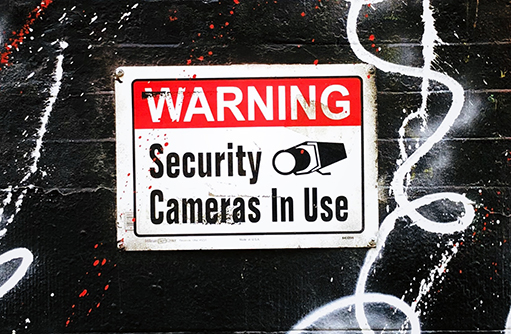How to Make Booby Traps: Brutal Security Devices in Modern and Ancient History
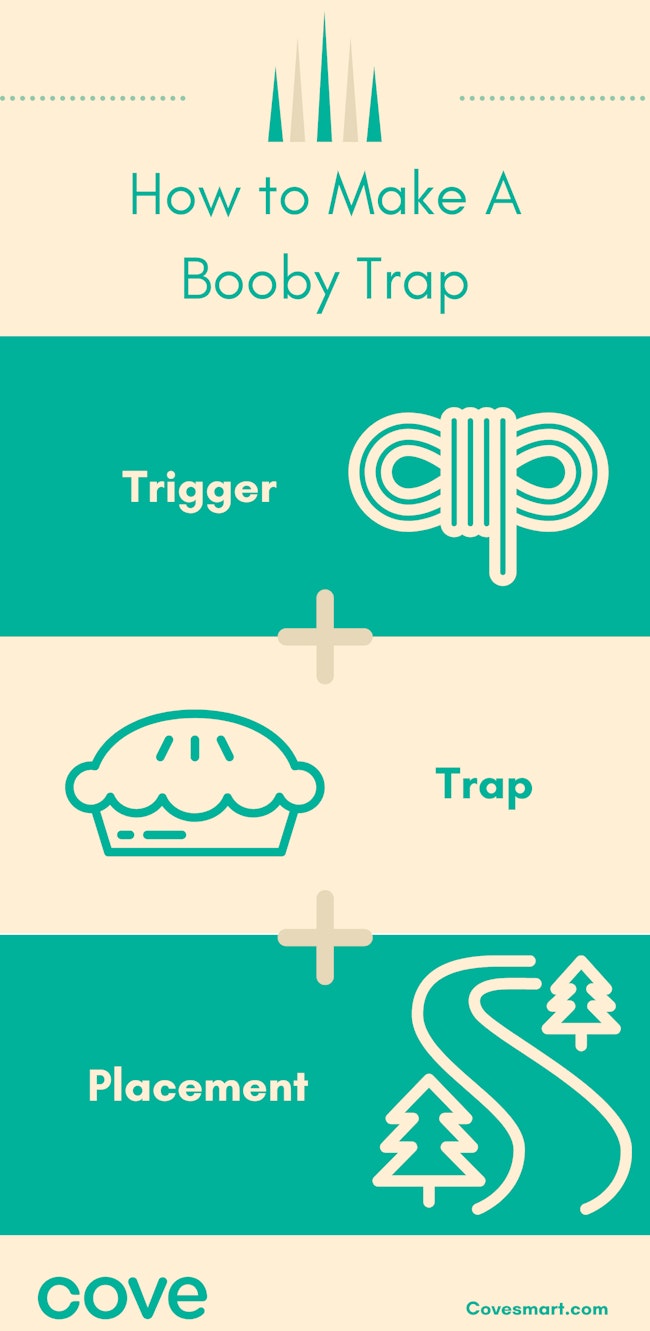
Why Are Booby Traps So Effective?
The effectiveness of a booby trap does not strictly come from its lethality alone. In fact, booby traps that burst with sounds or rotten smells can be as effective for personal safety as one that can injure or kill. Those that do inflict major physical damage, however, can cause just as much psychological damage. And not just to the victim only, but to all who witness the incident as well. What do booby traps do to their victims?
-
Unlike someone wielding a spear, a sword, or a gun, booby traps are indiscriminate about their targets. This means that anyone, be they enemy, ally, or civilian, can fall prey to their effects.
-
To trap a single enemy soldier is to demoralize every single soldier in the group and make them cautious and even paranoid that other booby traps may lie in wait.
-
Traps, especially those set in dense foliage or in narrow corridors can signal the start of an ambush, which can lead to further paranoia when a trap is encountered.
-
When one or more traps are tripped, squads must move more slowly to sweep for further traps and pitfalls. Mines are a common form of booby trap bombs, and fairly straightforward: when downward pressure is applied to the mine, a firing pin is pressed, triggering an explosion. Without someone familiar with these explosive devices (or equipped to find them when buried), pressing forwards is impossible without casualties.
-
Even if only a single trap is encountered in a given area, the whole area may be avoided entirely by the enemy, offering a safe zone from those who fear more booby traps.
-
If a trap manages to injure an enemy, it will cause the enemy to have to slow down trying to stabilize or evacuate their wounded.
-
Booby traps offer a great defense, especially when you have few defenders. Need to secure a cave entrance? There isn’t much need for an armed guard if you have a proper trap (or traps) in place.
The best method for employing a booby trap is to rely on predictable human nature. We are creatures of curiosity and habit. If we see something of convenience, such as a tool or a container that looks like it may hold something useful, our instinct is to reach for it and investigate. Flashlight bombs, for instance, are particularly vicious booby traps that set off an munition like a small internal grenade if the flashlight is turned on. Uncertainty and misdirection make for the most devious of traps.
For instance, say there appears to only be a single entrance into a building. Just inside is a tripwire that will pull the pin on a grenade, or fire off a mounted shotgun. But you don’t know that. You suspect it, but you will not know until you take valuable time to check. What if there are no other entrances? Even if you know for a fact the door is booby trapped, do you have the tools and the know-how to disarm it or trigger it in such a way that it will not harm your fellows or innocent bystanders? And even with the ability to find and disarm traps, in a city full of doorways and alleyways, or a forest dotted with caves and dense forest growth, it is likely you won’t catch every single one. This kind of psychological torment is what servicemen and women from all over the world face on a regular basis, especially in the wars of the last seventy-five years.
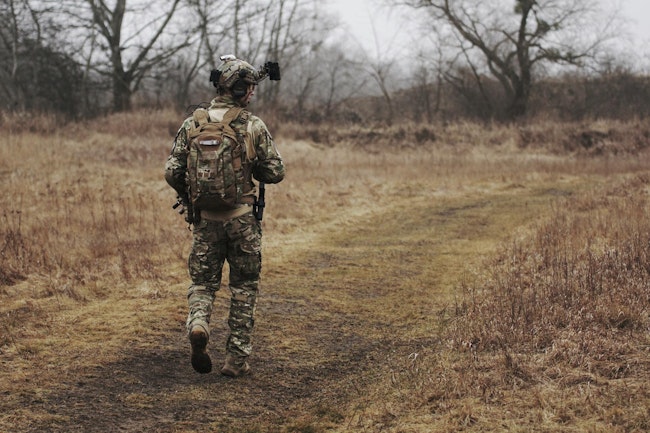
Ancient Traps
Booby traps of antiquity developed as a means of necessity. Tripwires and hunting lures made of twisted twine and gut string helped ancient man trap small and medium-sized game. Some traps have been found large enough to be deployed against huge animals, tactics that were unproven and thought impossible for prehistoric man to achieve. Later, traps would be developed to combat thieves of precious treasures and enemies of the state, many of which are so simple they continue to be used to this day.
Hunting Lures and the Tripwire
The idea is a very simple one: tie a knot in a rope and place the loop on the ground. Towards the direction of the loop, place a piece of bait. When your target steps through the loop, the knot will tighten around their foot, holding them in place until you can come along to collect. Hunting lures can be tricky to use properly, as positioning, materials, bait placement, and a bit of luck are all required. But multiple hunting lures increased the chances that an ancient hunter would feed their family. A hunting trap can be made with a simple string or twine, but another design is made using tension as you can see in this video.
A fishing trap may look like this, a cage designed to let fish in but not back out. Trapping, hunting, and fishing have been integral parts of each other for hundreds of thousands of years. From these lures and others, the idea of the trip wire was born. A tripwire is exactly what it sounds like: stretched taut between a trap and an anchor point, a wire, a string, or a cord will pull or activate the device attached to it.
Punji Sticks and Pitfalls
Imagine a soldier charging with his unit into a frenzied battle in the deep jungle. The terrain is rough and unfamiliar, littered with roots, rocks, and dense foliage so thick that it is difficult to see where his next step will take him. Then, without warning, his foot gives way as if falling into a hole. This, hole, unfortunately, is not natural. Filled with sharpened sticks, the soldier’s foot and calf are immediately lacerated, incapacitating him. His fellow soldier next to him also falls into a similar pit, and suddenly the enemy has taken out two brave fighters without having to fire a shot. Worse, the sticks have been covered in poison or other unmentionable materials. This spike trap filled with sharpened sticks called punji sticks ensures that the soldier will not only suffer grave injuries in the fall, but their extremities will likely become infected from the wounds. There is a reason these traps are banned from use according to the updated 1980 Geneva Convention accords. They are brutal, often undetectable, and deadly in multiple ways.
Pitfalls are such an effective booby trap that man has been using them for thousands of years. It was discovered in Tultepec, Mexico, that ancient man once hunted wooly mammoths directly, leading entire herds into dugout enclosures or pits where they could be clubbed or speared. Before this, it was assumed man did not attack mammoths on their own, instead leading them to locations such as swamps where they would mire themselves and die of starvation. But this proves that these booby traps are effective against even the largest of beasts.
Needless to say, if you dig a pitfall filled with sharpened sticks in your backyard or around your home, and someone falls in, you can expect swift action by police enforcement. Even enemies of war do not deserve the effects of such a booby trap, and neither do trespassers. There are less lethal ways of dealing with burglars!
Feather Spear Trap
Perhaps one of the earliest trip wire traps, feather spear traps are a unique kind of booby trap meant to injure larger prey such as boars or deer. Consequently, they are also fairly effective against humans as well.
Feather spears are named after the shape of the sticks used to pierce and maim the animal or person that passes through the tripwire. To illustrate the simple design, think of a comb with large bristles facing downwards towards a tripwire stretched taut along the ground between two trees. When something passes through the tripwire, the whole “comb” shoots towards the tripwire, with the bristles puncturing the legs or body of the creature within its path. Consequently, this type of trap is fairly effective against anything traveling at high speed, as the force and tearing power of the feather spears are increased.
While the video below shows a trap that would not fool any hunter-gatherer on the move, it would certainly cause a larger animal to maim themselves should they be ensnared in the tripwire and punctured by the sharpened wood.
Pharaohs and Their Tombs
When you think of booby traps inside of ancient tombs, you may immediately think of Indiana Jones or Laura Croft gallantly disarming dart traps, pressure plates, and giant rolling boulders! Unfortunately, these kinds of elegant traps are mostly movie fiction. In general, the truth is much more mundane... with a few exceptions. In their day, the bright white stone and glittering capstone of gold captivated the Egyptian skyline as one of the largest pyramids in the ancient world. Built to literally immortalize the dead pharaohs, these massive constructs featured very specifically designed chambers and hallways meant to house the pharaoh’s mummified body, his sarcophagus, gold and silver, precious gems and urns, and even the buried remains of loyal subjects and servants. The pharaohs believed that once they passed into death, they could carry all of the treasures that were buried with them into the afterlife, even their families and servants, becoming deities that would live as rulers for all eternity.
Whether or not their beliefs ended up as true, one thing was certain: the call of a king’s worth of riches and wealth could not be resisted.
While some tombs relied on very claustrophobic passages and blocked off rooms to guard their treasures, a few were guarded by confusing layouts and sheer vertical drops designed to keep determined grave robbers at bay. For the most part, unfortunately, these traps did not stand the test of time, and many tombs have been stripped of their treasures long before modern archeologists could document and save them for future generations. This is why the discovery of Tutankhamun’s tomb in the Valley of the Kings in Egypt was such a historic find, as such a pristine and untouched burial had never been found before.
As shared by this article from the Vintage News about Egyptian booby traps, one devious trap ended up being a very effective deterrent even to the present day: the floors of some tombs were covered in thick layers of hematite powder. This dust, when inhaled, would shred the inside of the lungs, causing a slow and painful death. In this way, even if treasures were stolen from the pharaohs, revenge would be theirs, even from the realm of the dead. Archeologists needed to wear full hazmat suits to even enter.

The Chinese Emperor’s Rivers of Mercury
Some tombs become booby trapped for different reasons. The first emperor of China, Qin Shi Huang, changed the Eastern world in a way very few Westerners understand. Conquering the six warring kingdoms in 210 B.C., he united the entirety of China for the first time under his rule. He was responsible for the construction of the Great Wall, a structure that has lasted for well over 2,000 years. But that wasn’t the only monumental structure he oversaw.
In 1974, a group of farmers digging a well stumbled upon the sculpture of a Chinese soldier made of terracotta clay. Chinese archeologists were called, and they found another. And another. And another! After building a massive museum complex around what they had discovered, they realized that they had stumbled upon the beginnings of Qin Shi Huang’s tomb. Even today, the work continues, as archeologists have not yet entered the tomb’s center.
Based on writings from the period, however, they do know of an intriguing detail that would certainly stop any trespasser. Qin Shi Huang believed he could gain immortality by ingesting liquid mercury, which he did daily as emperor. This was probably the reason he died, in fact. His tomb is said to contain “rivers” of liquid mercury, a deadly kind of trap that will undoubtedly serve as a deterrent to scientists (or anyone foolish enough) that eventually venture into Qin Shi Huang’s burial chamber.
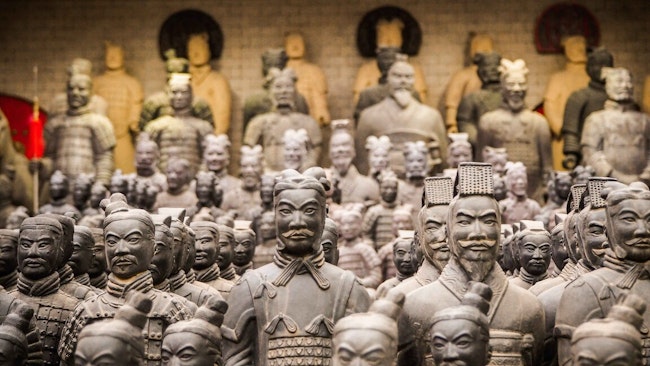
Modern Warfare and Deadly Force
With technological developments have come ingenious ways to build booby traps, some more deadly than others. Tripwires, grenades, mines, and motion-activated bombs serve to kill, incapacitate, and terrorize our armed forces, not to mention the civilian populations of the countries we fight to defend. The Geneva Conventions have outlawed many types of booby traps, but those without rules rarely follow them. Regardless, here are just a few of the booby traps that have played a role in our modern conflicts around the world.
World War II
The Nazi regime in Germany dedicated much of their resources into crafting lethal booby traps and bombs, using disguised spies to slip aboard Allied ships in an attempt to sabotage supply lines bound for Great Britain. These bombs came in many different designs, many disguised as everyday objects. Mess kits would come filled with typical rations, but underneath was a bomb filled with thermite that would erupt seconds after the lid was pulled. A simple can of motor oil with a false bottom would explode when someone unscrewed the cap. Unbelievably, they even developed a booby trapped chocolate bar; when the bar was broken on one end, a thin steel canvas would activate a small explosive charge. This was but one of many attempts to assassinate Winston Churchill that were discovered. You can see some amazing illustrations of these devices here, all drawn by a designer named Lawrence Fish.
When the Germans were in retreat after the Allied invasion at Normandy, Allied troopers soon discovered something terrible about the abandoned equipment. Every so often, they would find discarded German soldier helmets on the ground. When disturbed (or kicked, which happened more than once), a bomb hidden beneath would detonate, likely maiming the lower extremities of the soldier. Discarded rifles would also be booby trapped if lifted, many of which were tied to the pin of grenades. The horrifying truth was that German troops booby trapped almost anything they could find in an effort to slow the progression of the Allied advance. As for landmines, metal detectors could discover localized minefields, but the process was slow and incredibly dangerous. It became much worse when the Nazis developed plastic landmines that could not be detected at all. Because of the horrifying effectiveness of these munitions, updated Geneva Conventions have banned plastic landmine production by participating nations.
Explosives would become a standard tool of destruction in both land and sea. An underwater mine, for example, was designed in a spherical shape and came covered in dozens of detonating pins that reacted to touch by approaching ships. Each mine would contain up to five hundred pounds of explosives. Hundreds of these would be deposited in the middle of shipping lanes by U-boats hidden beneath the waves. According to Britannica.com, between the Axis and the Allies, over 550,000 of these floating terrors were dropped into the ocean, sinking over 2,400 ships and damaging hundreds more.
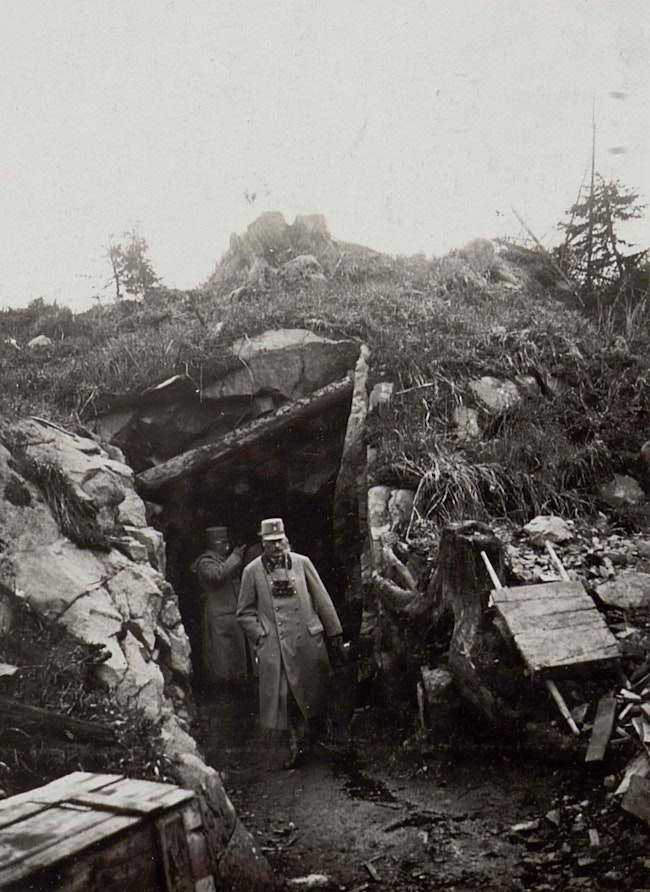
Vietnam War
One of the strongest factors that made the Vietnam War so psychologically and physically crippling to the men who slogged through those jungles were the lethal booby traps laid by Viet Cong guerillas. We previously talked about the effectiveness of punji traps, but Viet Cong traps got much worse than this. The Viet Cong relied on tight underground tunnels to hide, prepare for firefights, and ambush US fighters. When clearing out these tunnels, you can imagine the fear in a soldier’s mind at the thought of claustrophobic passages of dirt and stone. But imagine at the entrance of a cave is a small pitfall. The soldier’s leg breaks, and he immediately feels a sharp pain shoot through his ankle. He struggles and makes it a few steps towards the exit before collapsing to the ground, Dying quickly afterward.
What got him? A snake. One of the most venomous snakes in the world, in fact: a bamboo pit viper. Guerillas often carried these dangerous creatures in their sacks to create these terrible traps. There’s a reason they were called “three-step snakes” by US servicemen: you could only take three steps before the venom of the snake would take your life.
Another booby trap unique to the war was the flag bomb. In war, it is only natural that a soldier would want a trophy of some sort to commemorate their victory over their enemies. Taking down flags and raising the US flag was a customary act when important locations were taken. The flagpoles holding the flags, however, were often booby trapped; enemy guerillas knew the custom, and took advantage of it whenever they could. When a location was about to be captured, the communist conscripts would booby trap anything a US soldier would consider a war trophy with an explosive charge.
Middle Eastern Conflicts
The wars in Iraq and Afghanistan have put the US and coalition forces in some of the harshest conditions in the world. Besides the fact that it can be difficult to identify enemy fighters, you never know when you will come across an armed booby trap. The most common and deadly from these conflicts have been IEDs, or improvised explosive devices. Created from an artillery shell, a mortar shell, or just regular TNT, these traps are usually planted by terrorists in the middle of busy roads or military advance routes. These have been so effective, it is sadly common for US army men to return from a tour with missing legs or arms. Technology with artificial limbs have enabled these men and women to return to somewhat normal lives (and even return to service), but the psychological effects of the horrifying event never truly goes away.
To combat IEDs and enemy fire, damage-resistant vehicles have been rolled out, designed to keep the fighters inside safe from underground explosions. One fascinating vehicle that has been used by Israeli and coalition forces in recent conflicts is the armored D9 bulldozer. Plated on all sized with reinforced steel and bulletproof glass, these bulldozers tread right through minefields, purposefully detonating any traps to make way for advancing combat lines. These have been used in major offenses, capable of withstanding small arms fire, multiple rocket propelled grenades, and even an underground explosive device of more than half a ton of TNT.

In Conclusion
Now that you know the terrible effects of booby traps on anyone that trips into them, you should understand that booby trapping your home or your business with a homemade booby trap is probably a bad idea. If you're concerned about your personal security, it would probably be better to invest in a personal safety device. Pepper spray or a stun gun should do plenty to keep you safe and are easily found self defense products. You do have options for home security that will help secure your property from trespassing and invasion, however. In a way, home security devices are silent forms of booby traps just waiting for someone to sound the alarm.
For a complete DIY security system that is affordable and easy to install. Our devices are safer than camouflage pits, and much more effective than tripwires; you won’t even have to bend down to arm your alarm!
Ready to get started?
Take this short quiz to build your customized system today!
Takes less than a minute

